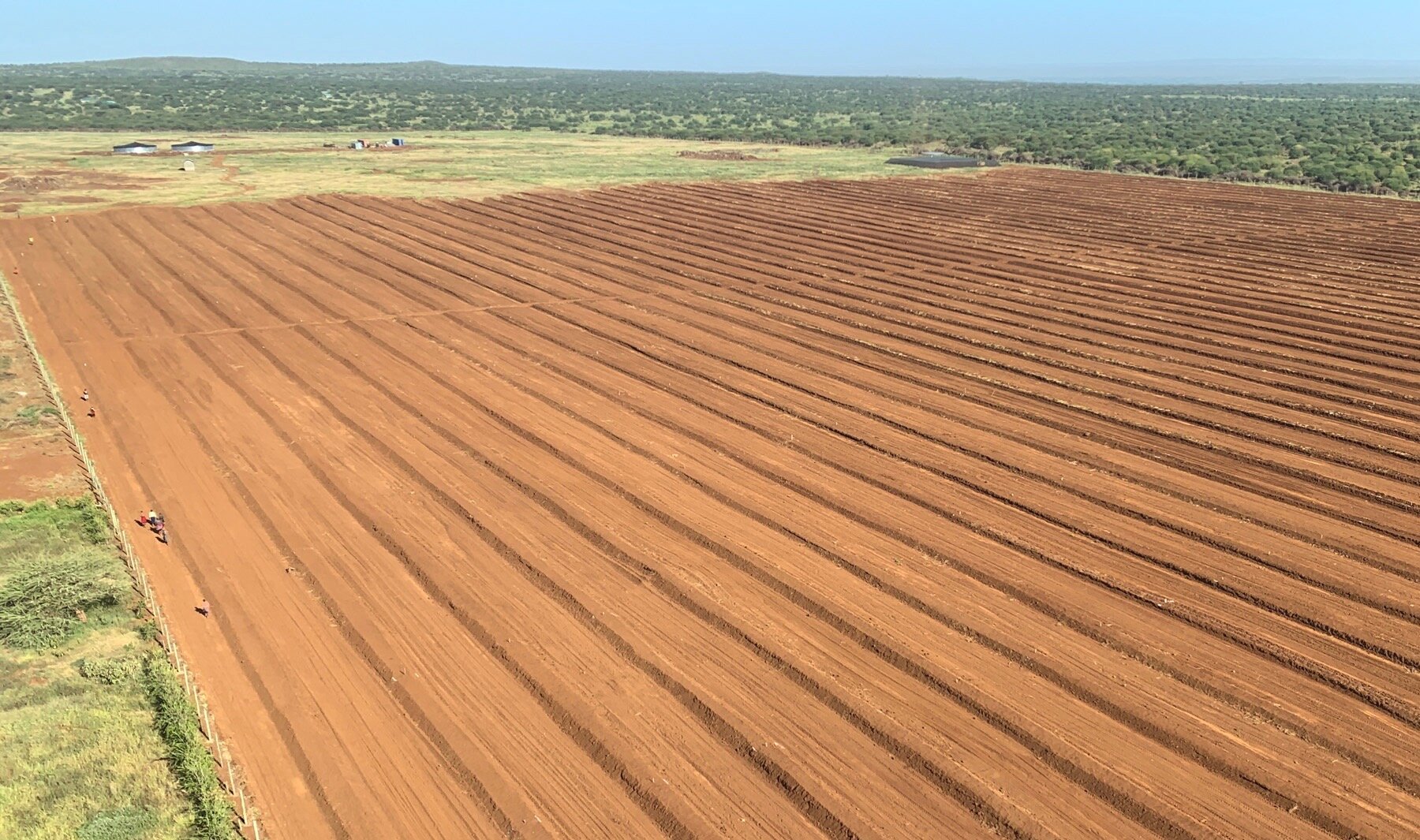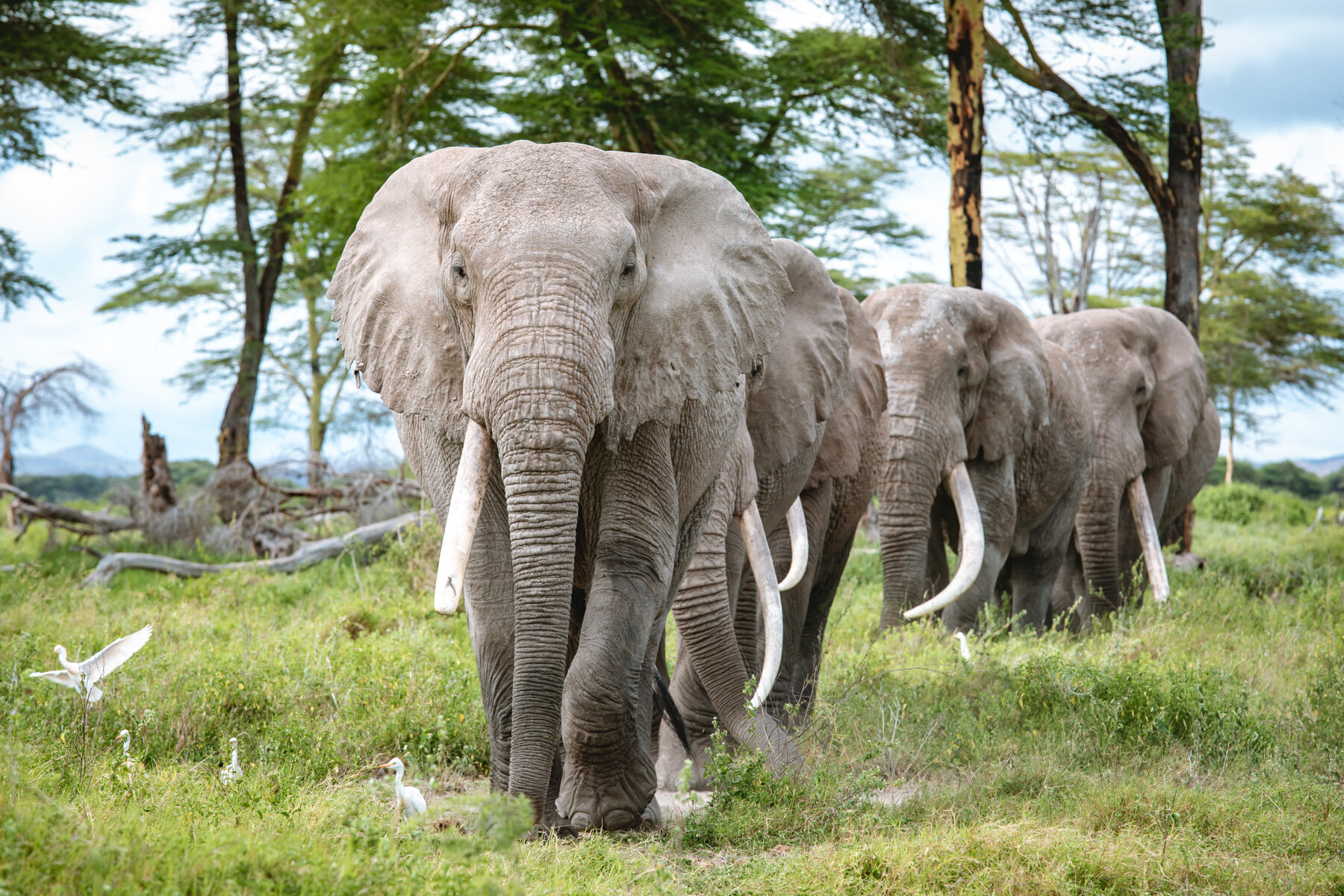Superfood vs Super Tuskers
Kenya’s avocado industry is thriving, but a new farm in a crucial wildlife corridor could lead to the collapse of an entire ecosystem.
The evolution of the avocado from misunderstood ‘alligator pear’ to ‘green gold’ has been well documented. Stemming from the surge in popularity of Super Bowl guacamole in the 1990s, and firmed by the recent rise of the clean eating movement, the value of the global avocado market is forecast to reach more than 17.9 billion US dollars by 2025. But beneath this rich exterior are some hard truths of international agribusiness. For some of the avocado’s largest exporters, this spike in production has come with social and environmental consequences. In the mountains of Mexico’s Michoacán State, rising avocado prices have fuelled illegal deforestation, and extortion of farmers by criminal organisations such as Los Caballeros Templarios (The Knights Templar). In Chile’s dry Petorca Province, the diversion of water to irrigate vast avocado plantations has caused a regional drought. And now, near Kenya’s famous Amboseli National Park, a new avocado development has sparked a turf war within a crucial wildlife corridor.
Local communities and conservation organisations have been angered by the creation of a 180-acre avocado farm in the heart of the Kimana Wildlife Corridor — an important strip of land enabling the free movement of animals between neighbouring wilderness areas. Kenyan agribusiness firm, KiliAvo Fresh Ltd, started work on the farm last year, with approval from the National Environmental Management Authority (NEMA). Opponents of the development raised concerns about its impact on the fragile Greater Amboseli ecosystem, and on the Maasai communities that rely on open rangelands for their traditional pastoral livelihoods. In the face of this pressure to revoke KiliAvo’s licence, NEMA issued the firm with a stop order so that it could review the case. KiliAvo challenged that decision and continued to prepare the farm, clearing it, fencing it off, drilling boreholes, and laying irrigation lines to water rows of avocado saplings. Work has now stopped following a ruling at the National Environmental Tribunal, where the case is ongoing.
An aerial view of the KiliAvo farm after clearing of natural vegetation
The establishment of the farm is indicative of the expansion of Kenya’s avocado industry in recent years. Already the eighth-largest global producer of avocados, its exports of the fruit jumped 33 percent to 127 million US dollars in the year to October 2020, according to the Fresh Produce Exporters Association of Kenya. County governments have encouraged farmers to grow avocados because of the high local and international demand, and because they don’t require much labour to maintain. But as farmland expands across Kenya, wild spaces are being constricted.
Left to right: Grant’s gazelles trapped against the KiliAvo fence; Another aerial view of the KiliAvo farm, after ploughing
The Kimana Wildlife Corridor is already surrounded by a patchwork of farms — something that KiliAvo have pointed out in statements to the press. This includes a nearby 120-acre vegetable farm that was permitted in 2019, which has since grown to 540 acres. Agricultural development is allowed in the region, but only in distinct zones. Land use in the area is governed by two management plans — one focused on the corridor and another on the entire Amboseli ecosystem. Local landowners and conservation organisations have stressed that the KiliAvo farm isn’t within a permitted agriculture zone, and so contravenes both of these plans. A representative of one of these organisations — Big Life Foundation — told me that the farm’s approval would set a precedent for further development within wild spaces that are already under pressure:
‘The area is a critical part of the link between Amboseli and the community rangelands to the east of it, through Kimana and further on to the Chyulu Hills and Tsavo West. Closure of this vital wildlife corridor would lead to an increase of human-wildlife conflict, and would compromise the viability of globally-significant wildlife populations that depend on freedom of movement across this arid landscape.’
At its narrowest, the corridor is just 70 metres wide, and funnels the animals that use it across a busy tarmac road into the 5,700-acre Kimana Sanctuary. Among those that frequently pass through it are huge bull elephants with tusks that almost graze the earth. There are very few of these iconic ‘Super Tuskers’ left on the planet, and the Greater Amboseli ecosystem is one of their last key habitats. Elephants, in particular, roam vast distances across this landscape in response to seasonal fluctuations in water and resource availability. The swamps within the Kimana Sanctuary provide a vital year-round source of water, especially now that competition for resources between wildlife and humans in expanding farmlands is at an all-time high.
A line of bulls in the Kimana Sanctuary within the Kimana corridor. Photo by Jeremy Goss
The avocado farm’s water footprint is also a cause for concern. It’s a notoriously thirsty crop, although its average footprint is difficult to estimate. Plantations around the world require varying amounts of ‘applied water’ to grow — which is irrigation water, and not rainfall or moisture in the soil. On one end of the scale you have very humid places like the Philippines, where farmers barely have to irrigate. And on the other end you have extreme cases like Petorca, in Chile, which is very dry. There it takes an average of 320 litres of applied fresh water to grow a single avocado. Critics of the KiliAvo farm have warned that industrial-scale irrigation in Kimana would put further strain on a drought-prone ecosystem.
The aquifer that is being tapped to irrigate the avocados is also a key source of water for the local communities in the area. The bulk of the land within the corridor is taken up by conservancies belonging to Maasai landowners, who want to retain their existing pastoral lifestyle. Agricultural developments will threaten the viability of these community conservancies, and fragment the rangelands that local communities rely on.
The genes that create such special tusked male elephants in Amboseli are present in many females too — this is Sadie who is 56 years old. Photo by Jeremy Goss
KiliAvo have said that the farm would provide employment within the local communities, particularly for out-of-work tourist workers during the coronavirus pandemic. It remains to be seen whether this employment would directly benefit local landowners, or a rapidly swelling nearby urban population of jobseekers from elsewhere in the region. The vocal objection of local landowners to the development suggests the latter.
The region is still heavily reliant on a conservation and ecotourism industry that supports thousands of jobs, and that generates tens of millions of dollars for the local and national economies. Kenya’s avocado industry is growing, but it pales in comparison to the revenue brought in from tourism.
So the next few months, and the outcome of the case at the National Environmental Tribunal, are critical for the Kimana Wildlife Corridor. If the farm is approved and a dangerous precedent is set for further land subdivision in an already fragile wilderness, it could lead to the collapse of an entire ecosystem. With so much at stake, it’s vital for the farm’s impact to be thoroughly assessed.





